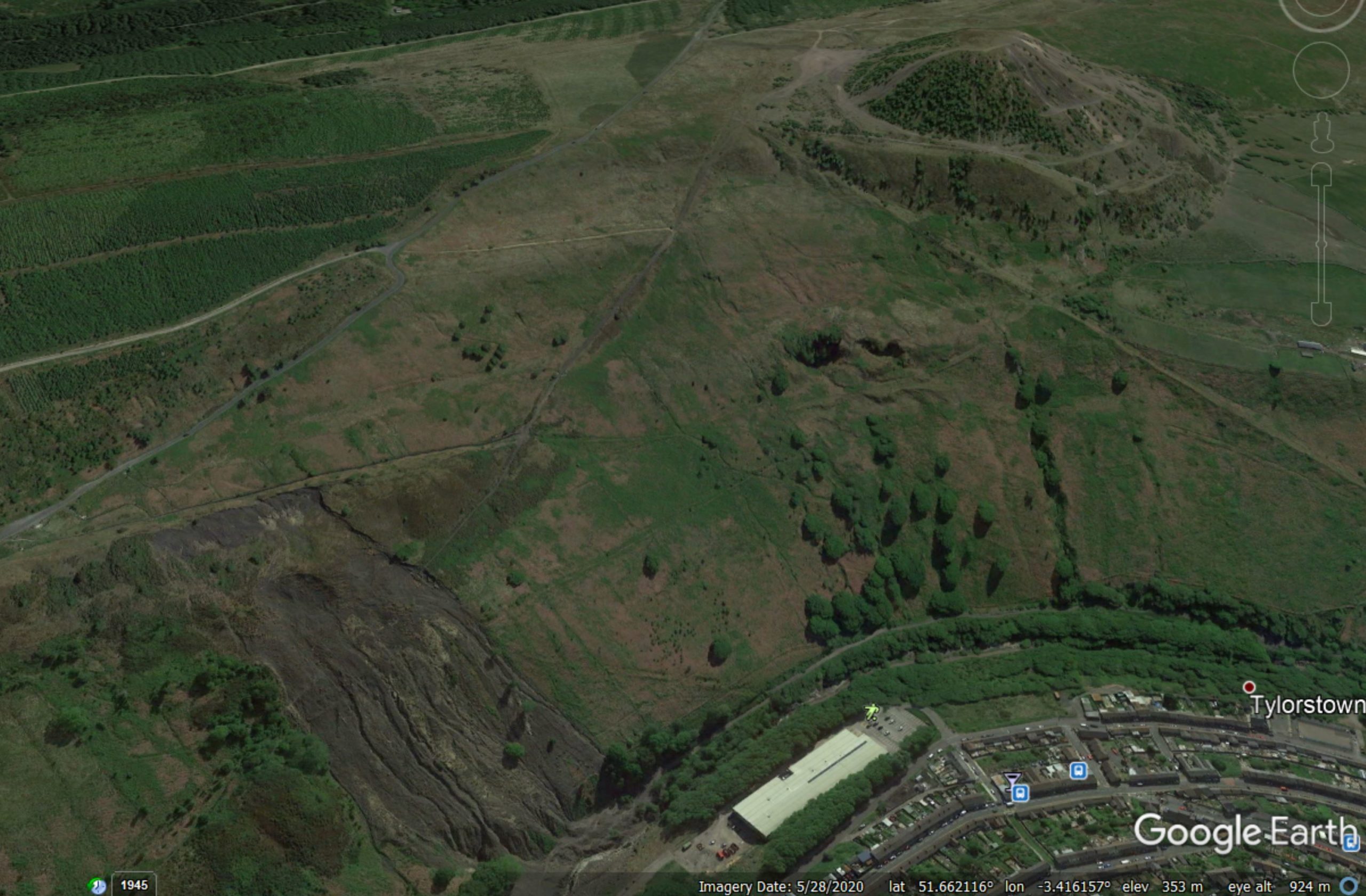7 April 2021
The complex politics of managing coal waste tip stability in South Wales
Posted by Dave Petley
The complex politics of managing coal waste tip stability in South Wales
The valleys of South Wales have one of the most complex landslide settings in the UK. It is a landscape that has a great deal of natural instability, much of it relict. However, many slopes continue to move, sometimes causing substantial levels of disruption. On top of this is imprinted the effects of decades of coal extraction, which led to increased instability. In some cases existing landslides were reactivated. And finally, and most significantly, poor coal waste management practises led to the creation of thousands of spoil tips, some of which had substantial stability problems. The worst example is of course the appalling 1966 Aberfan disaster, but that case was just one of many spoil tip landslides.

Google Earth image of the coal waste tips at Tylorstown in South Wales. Note the large conical tip at the top of the hill and the failed tip in the lower left corner.
Coal mining has now ceased, and many of the most dangerous spoil tips have been removed. However, the landscape remains dotted with many legacy waste piles, often located high on the valley walls. These have been mostly stable in recent decades, but in February 2020 it became clear that the beast was waking from its slumbers. Heavy rainfall triggered a large failure in a coal spoil tip at Tylorstown. And then in December a further failure occurred at Wattstown.
It is now recognised that there is a major problem. There are thought to be about 2,100 spoil tips left in the valleys of South Wales. Around 300 of these are considered to be high risk. Perhaps surprisingly, only 40 of these are managed by the Coal Authority, the governmental nod with responsibility for (amongst other things) the management of historic liability issues, including polluted water, subsidence and surface hazards associated with past mining activity. The remainder are owned by a range of bodies, including local authorities. Perhaps surprisingly, the majority are privately owned.
The FT has a really good article about the complex politics that surround the management of the coal waste tip stability hazard. It notes that the likely financial cost of dealing with the hazard is very substantial – the Tylorstown tip alone might cost £10 million to remediate. The total bill might be in the order of £500 million – and experience tells us that these costs tend to balloon once the work commences.
Until recently the UK Government position has been that this is a problem for the Welsh Government, but the scale of the threat means that it is likely to be beyond its means. Cash strapped local authorities and private land owners will not have the resources. The article notes that there is a strong argument that the coal was mined in the national interest, such that the costs should be carried by the whole of the United Kingdom.
Strangely, the slow motion horror show that is Brexit may play a key role in how this plays out. In Scotland, Brexit has turbocharged the move towards independence, threatening the historic union. This is now spilling over to Wales, where the profile of independence is rising. Boris Johnson is the Prime Minister from the Conservative and Unionist Party; the gathering momentum for independence is not a good look. So, the article speculates, the UK Government might have to step in to cover the costs of mitigating the spoil tip hazard as a sweetener to the electorate in Wales.
Landslide hazard is often viewed as a physical process, managed through good engineering geology and high quality engineering. The reality is that the scale of the threat means that politics is often at least as important of engineering. In the case of South Wales, the complex politics might be the key that unlocks the funding needed to manage the threats posed by the coal waste tips.


 Dave Petley is the Vice-Chancellor of the University of Hull in the United Kingdom. His blog provides commentary and analysis of landslide events occurring worldwide, including the landslides themselves, latest research, and conferences and meetings.
Dave Petley is the Vice-Chancellor of the University of Hull in the United Kingdom. His blog provides commentary and analysis of landslide events occurring worldwide, including the landslides themselves, latest research, and conferences and meetings.
IIRC, the infamous ‘Wigan Alps’ tip-group were levelled by a company that realised it could profitably separate the components and sell them as eg graded aggregate, reclaim the land…